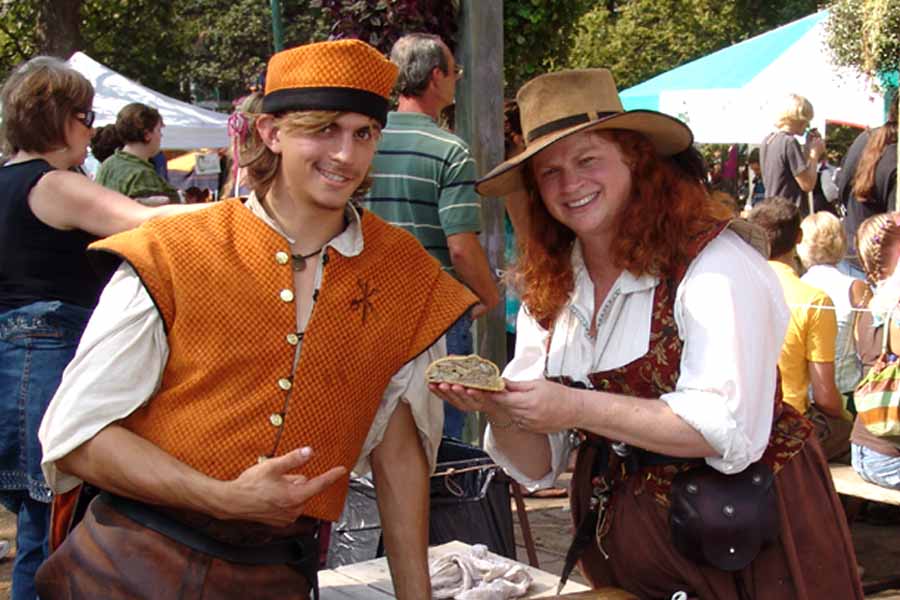Preparing food with heat or fire is an activity unique to humans and over the years it has perfected into an art form. Many anthropologists believe that cooking over a fire developed around 250,000 years ago. From cooking, developed agriculture, commerce, and transportation across different regions, offering cooks new ingredients and techniques. New inventions and technologies, such as pottery to hold and boil water, expanded cooking techniques.
The most common cooking techniques included roasting with a firedog over an open fire where instead of cooking on a single spit, they use multiple spits. Meats roasted on these firedogs included joints of larger animals or multiple smaller animals being cooked together.
Boiling meats was also popular. Using large cauldrons, cooks would place meat in boiling water or wine and place the meat into the pot using large hooks called flesh hooks. Meat was often parboiled before they were roasted on a firedog. Other cooking techniques include frying, hearth baking, and oven baking.

One of the techniques that fell out of favor over the years is salt baking. Baking in salt is not difficult. This technique has become popular in many of the fine dining establishments where servers will crack and remove with flourish. Inside the white salt dome lies perfectly cooked, moist and fragrant fish. Baking fish (or vegetables, even other meats) in a salt crust creates a sort of oven within an oven. The salt seals in moisture essentially steaming the fish inside. Because the salt absorbs the moisture, the texture of the fish ultimately is more like roasted than steamed fish.
Below is a fairly easy-to-follow recipe on how to create your own salt baked fish. I have created this dish using a multitude of seafood including salmon, trout, eel, and other local white fish. I hope you enjoy it as much as I have.
Ingredients:
4 cups kosher salt
1 whole red snapper, striped bass, or porgy (1-1/2 pounds), cleaned and scaled (we used tilapia in this recipe and it was delicious)
1 lemon
3 rosemary or thyme sprigs
Preparation:
Preheat oven to 450 degrees F. Line 13-inch by 9-inch baking pan with foil; spread 2 cups salt in bottom of pan.
Rinse fish inside and out with cold running water; pat dry with paper towels. From lemon, cut 3 slices. Cut remaining lemon into wedges. Place lemon slices and rosemary or thyme in cavity of fish.
Place fish on bed of salt; cover with remaining 2 cups salt. Bake until fish is just opaque throughout when knife is inserted at backbone, about 30 minutes.
During the Renaissance, cooks would place parchment, leaves, or husks in the bottom of the pot and place the fish on top of it. It would allow the fish to bake in the salt without burning or scorching the salt or the fish.
To serve, tap salt crust to release from top of fish; discard. Slide cake server under front section of top fillet and lift off fillet; transfer to platter. Slide server under backbone and lift it away from bottom fillet; discard. Slide cake server between bottom fillet and skin and transfer fillet to platter. Serve with reserved lemon wedges.
Yield: 2 main dish servings
As you can see from the photo timeline, we pulled it from the open fire, removed the crust, and plated the dish for presentation.


 orth it between the demonstrations and cookbook sales. The cold and rainy weather did not diminish our spirits!
orth it between the demonstrations and cookbook sales. The cold and rainy weather did not diminish our spirits!
